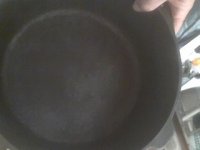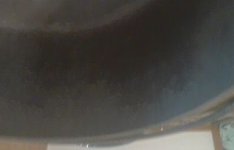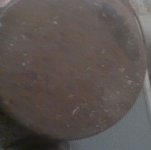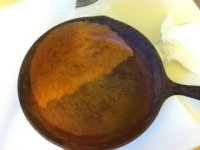Rob, your words come across very harsh.
I simply included what was written to me, I wasn't trying to endorse their methods. I, too, thought that, by the way she worded it, that it was a liability issue.
I'm not sold on, nor completely put off by the Lye treatment; just trying to have a conversation.
And I am listening.
If I came off as harsh, I apologize, wasn't my intention...
When I started back into cast iron last year, I made every mistake in the book by following incorrect advice.
Have 2 old McClary dutch ovens - my beloved bread makers - that I gave a ride in the fire pit as it was recommended on another site. They are now spinners, but still great breadmakers. Included with those dutch ovens were a couple of old lodge skillets and a couple of Wagners.
Wagner National number 9 in immaculate condition. Took a wire wheel to a few small spots as oven cleaner wouldn't clean it. Ended up with high spots on the surface that won't season because of it, the pan sucks now, done.
I have a couple of friends that have sandblasted really old skillets - only to find out afterward that they were worth some money, but are now greatly reduced and as far as i'm concerned - ruined pieces of history.
Both lye and electrolysis are definitely the way to go. Now that I have the right information from the right people, it's wonderful. Forums like this have a huge culmination of experience and expertise in all areas of cast iron - and i'm no expert.
There is so much information out there, so many ways to do things - and some pushy people when it comes to what they believe to be true. You are getting the right advice here. Now whether you choose to take it, that's up to you.
I personally use a lye bath ratio of 4 gallons of water to 1 pound of lye, this does the heavy lifting. Then if needed, it goes into the electro bath. I don't neutralize the lye, just scrub it in water, then soap and water. It's clean when done. Just my 2 cents.




